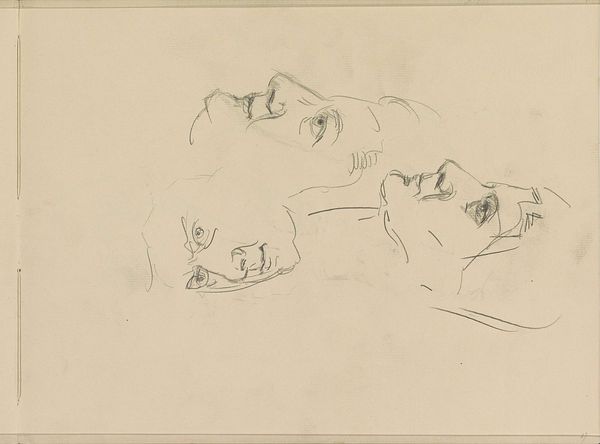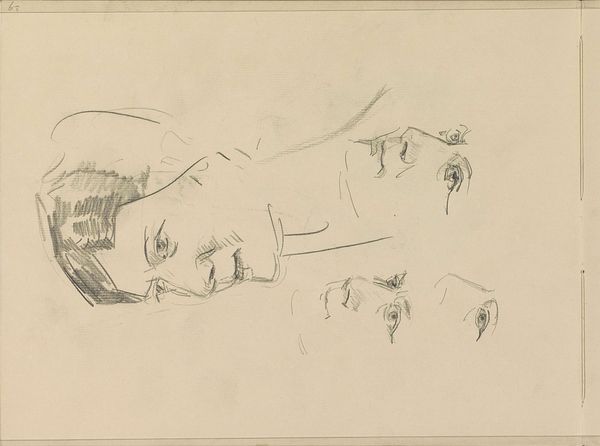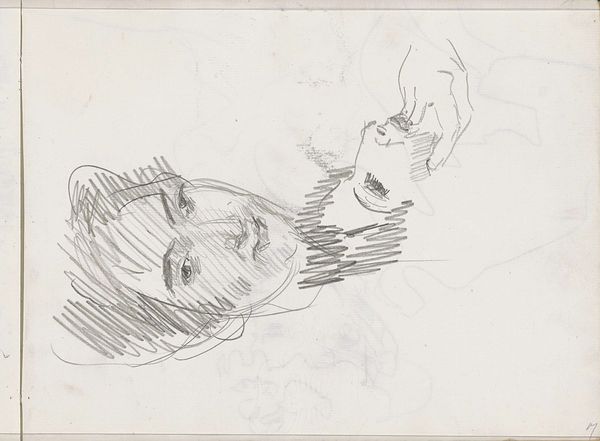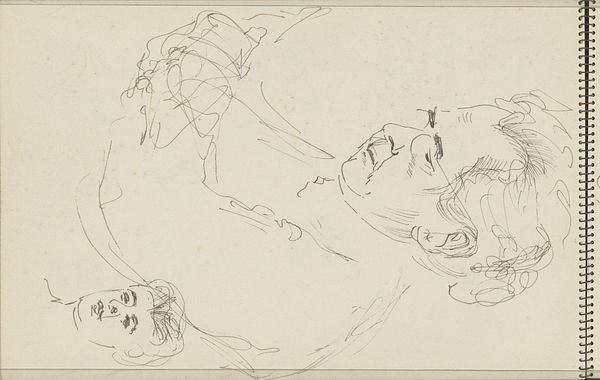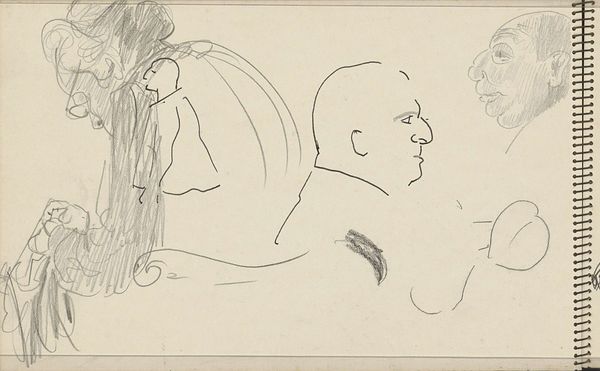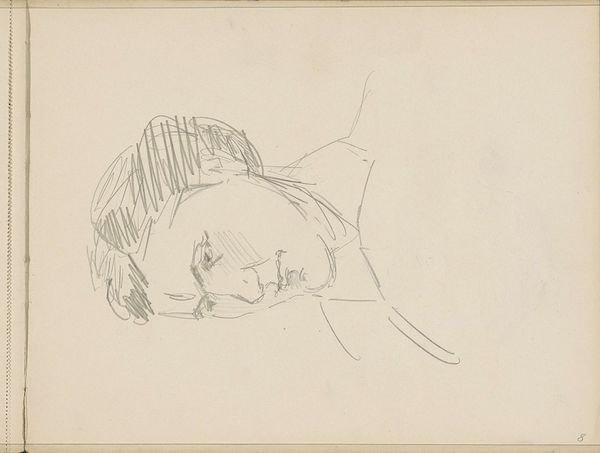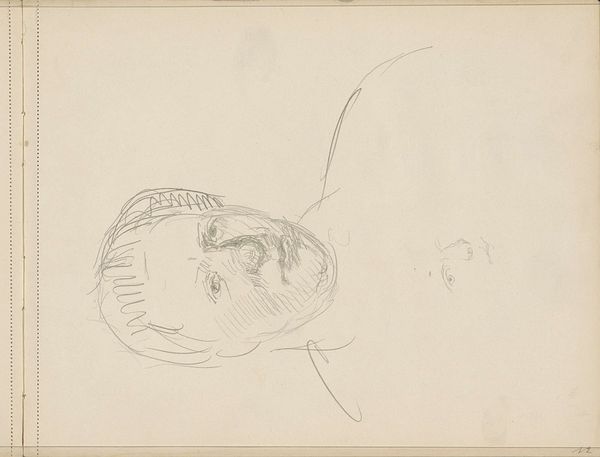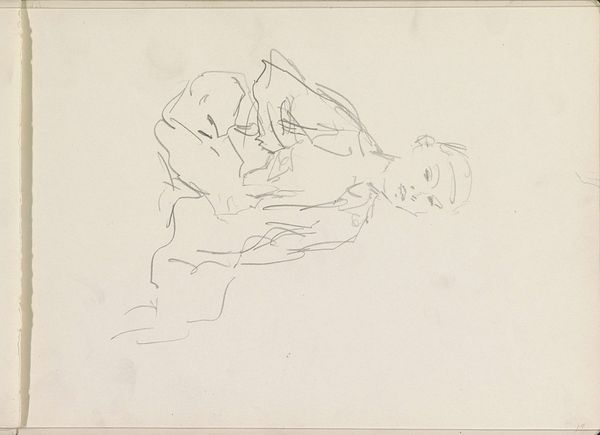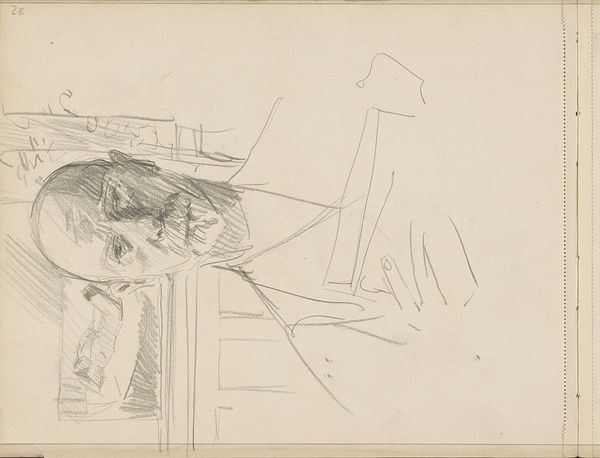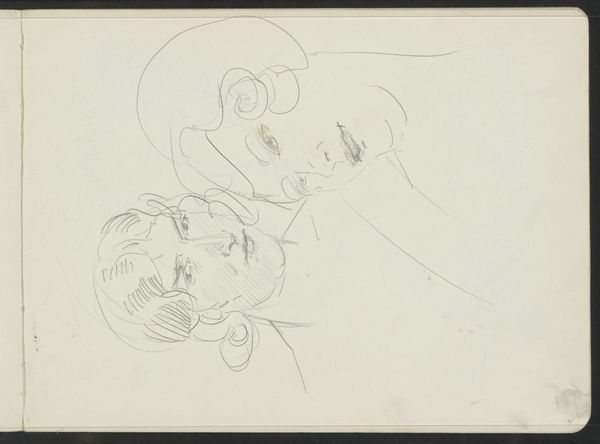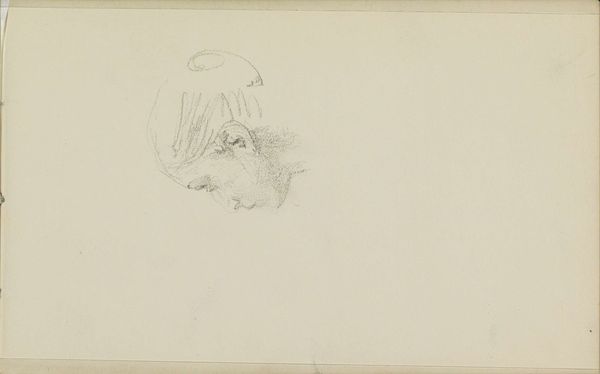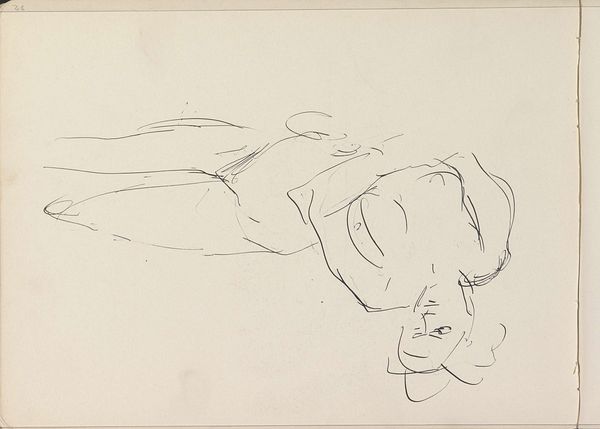
drawing, pencil
#
portrait
#
drawing
#
pencil sketch
#
figuration
#
pencil
Copyright: Rijks Museum: Open Domain
Curator: Isaac Israels created "Drie vrouwenhoofden," or "Three Women's Heads," sometime between 1875 and 1934. It's a pencil drawing, currently held at the Rijksmuseum. My immediate impression is one of intimacy, like peering into a private sketchbook. Editor: Absolutely. The pencil strokes are so delicate, almost hesitant, and capture such raw emotion. Are we invited into their individual narratives as women during this era, or should we consider something broader? Curator: Well, Israels was known for his keen observation of modern life, particularly the lives of working-class women in urban environments. These could be studies for larger works, glimpses into the world of female laborers and models, whose stories are so frequently underrepresented. The looseness almost makes each of the portrayed float above reality and come together into one ethereal interpretation. Editor: True, but I also see how these heads reflect larger societal frameworks surrounding women in the late 19th and early 20th centuries. Their gazes—one downward, one sideways, the other almost confronting us—speak to the limitations imposed on women and the various strategies employed for survival, self-expression, perhaps a commentary of their societal expectations in that time frame, as the three heads have distinct expressions. Curator: It’s tempting to read into each gaze individually, and your theory stands that they are reflecting the role society had upon them during the time they were illustrated. The directness is striking, though. Usually, we see such demure representations. Editor: It does disrupt that objectification narrative in many ways. Each woman exists in a space of not being an objectified depiction and shows hints of resisting these traditional, patriarchal portrayals by showing agency within this minimalist interpretation. Curator: Ultimately, "Three Women’s Heads" encourages us to consider the complexities of female identity and representation through pencil, as simple and un-invasive the medium is, and allows us to consider who decides to display what narrative to its beholder. Editor: An incomplete sketch; which begs the questions of whether this mirrors the overall completeness and the individual completenesses' within one's identity. These pieces challenge historical narratives. They provide a tangible framework to question gender and cultural power dynamics that will leave an impression and linger long after one views these drawings.
Comments
No comments
Be the first to comment and join the conversation on the ultimate creative platform.
